I have inherited a circuit from another designer using a 12.288 MHz crystal as the source for an audio clock. We recently had supply chain issues and I was asked to approve an alternate part with identical specifications. As part of this I compared an FFT of our "golden sample" unit and the new crystal under consideration.
I was surprised to find that the FFT of both units looked like this:
Here you can see two frequency peaks - one at 12.28 MHz (close to the expected 12.288 MHz) - and another with pretty much identical amplitude at 12.72 MHz. This looks like bad news to me - although the audio output sounds fine to my ear.
Does anyone know what the likely cause of this is? Given that this is used to clock a DSP (which uses it as the audio clock source) are there likely to be negative impacts from this sort of behaviour?

